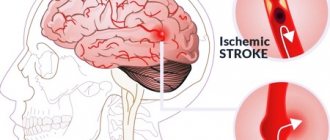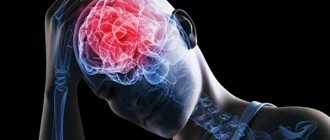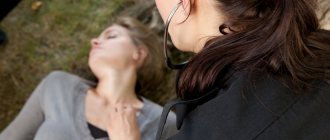general characteristics
Auditory hallucinations are manifested by various sound phenomena - melodies, noises, voices, which are perceived by patients as true, really existing.
The attitude towards hallucinatory phenomena as a pathology is formed gradually as a result of beliefs on the part of loved ones and doctors. In mental disorders, when hallucinatory sounds are justified by delusional concepts, patients continue to believe in the reality of what they hear, despite the assurances of others. Auditory hallucinations can be simple or complex. Simple ones are represented by acoasms - noise, hissing, roaring, grinding, buzzing. Sometimes patients cannot guess what type of source generates the sound, in other cases they clearly determine its “reasons” - the shuffling of a boot sole, the creaking of floorboards, the hum of a car. Another type of simple auditory hallucination is phonemes. These are speech deceptions of hearing in the form of shouts, individual vowel sounds, syllables, and fragments of words.
Complex auditory hallucinations are represented by musical and verbal images. With musical phenomena, people hear playing musical instruments, singing, and melodies. Verbal hallucinations – individual words, phrases, monologue or dialogic speech. Verbal hallucinatory phenomena include commentary, threatening and imperative. Commenting voices express an opinion about the patient’s actions, threatening voices intimidate, imperative voices order or prohibit something to be done, for example, they demand to commit suicide or refuse to eat.
Hearing Deceptions
Auditory hallucinations are considered the most common. One of the forms of such disorders is when a person hears non-existent sounds such as crackling, wind or animal howling, whistling, noise. Such phenomena are called acoasms.
If a person hears speech, individual words or syllables, the pathology is called a phoneme - a verbal verbal hallucination. For the patient, these are “voices”, loud or quiet. As a rule, he hears them not far from him - in the room, on the street, on the balcony, on the roof. Voices can be heard from a closet, from any hollow object, or from behind a neighbor’s wall. They are heard from one place, moving away or approaching. In some cases, a person imagines the roar of a crowd, acquaintances or complete strangers addressing him. They can scold him, force him to act, defend him, or simply discuss current affairs with him.
If auditory hallucinations are associated with a specific situation, they are called scene-like. Often such phenomena can be accompanied by affective disorders: increased mood, the appearance of irritability, anxiety or fear. As a rule, at first, when hearing various sounds, a person tries to detect the source of irritation by searching roofs, attics or nearby rooms.
Causes of auditory hallucinations
Auditory hallucinations are more often classified as productive psychopathological symptoms, but can occur as a manifestation of neurological pathology affecting certain brain structures, as well as in the absence of diseases. The underlying causes of hallucinatory symptoms are abnormal activation of the auditory cortex, unrelated to external stimuli, and loss of the ability to recognize internal speech as one's own. Factors that provoke auditory hallucinations are physiological changes, mental illness, organic damage to brain tissue.
Physiological reasons
According to medical research, sometimes auditory hallucinations occur in completely healthy people. They are transient in nature, often provoked by unusual external influences. The critical attitude towards sound phenomena remains relatively intact: at the moment of hallucination, people cannot distinguish what is heard from reality, but later they begin to think about the unreality of what happened. The most likely causes of hallucinatory experiences in a healthy person:
- Lack of sleep.
Refusal to get enough sleep provokes depression of nervous functions: cognitive processes and orientation in time and space deteriorate. Visual and auditory hallucinations appear on the fourth day of insomnia, when anxiety, fussiness increases, and a feeling of unreality of the surroundings arises. Volitional functions are lost, the person becomes suggestible and controllable. - Sensory deprivation.
People are constantly surrounded by background noise. Absolute silence disorganizes the functioning of the brain; it begins to compensate for the missing stimuli with its own pathological activity, creating auditory hallucinations - sound images that have no external cause. Thus, astronauts in outer space are at risk of hallucinosis due to sensory deprivation. - Transition to sleep.
Just before falling asleep, some people experience hypnagogic visual and auditory hallucinations. Their content is often related to events that happened during the day or about which the person has been thinking a lot lately. Auditory phenomena are unstable and easily disintegrate when trying to recognize their source. Similar hallucinations are sometimes observed during periods of awakening and light daytime naps. - Adolescence.
Auditory hallucinations without any illness can occur in children during adolescence. The reasons are a violation of the process of internalization of the inner voice: when a child learns to conduct internal dialogues and read to himself (not out loud), inner speech is separated from its source, that is, the process of its generation ceases to be fully realized. There is a feeling of a voice from outside.
Mental illness
The most common causes of persistent auditory hallucinations are mental disorders. Patients can hear noises, the sound of steps, creaks, voices, melodies. In the structure of hallucinatory-delusional syndrome, the plot of hallucinations echoes delusional ideas: it strengthens them, guides them, confirms them. The most dangerous are imperative voices that order the patient to perform actions that harm himself or others. Possible causes of hallucinations of the auditory modality in psychopathology:
- Bipolar affective disorder.
The disease is characterized by alternating manic and depressive periods. Severe forms of depressive phases occur with increased distrust of others, the formation of ideas of relationship, and manic stages - with the experience of bliss, delusions of grandeur and physical impact, and auditory hallucinations. The patients' thoughts become incoherent, their behavior becomes agitated and inhibited. Auditory deceptions of perception enhance delusional ideas (“someone is whispering, which means they want to attack”). - Schizophrenia.
About 70% of patients hear voices that threaten without reason, give information about the desire of others to cause harm, comment on the patient’s actions, make comments, order suicide, or injure another person. Another option is antagonistic auditory hallucinations, when a person hears a dispute between “good” and “bad” voices. Associated symptoms are delirium, fragmented thinking, inadequacy of emotions and behavior. - Epileptic psychoses.
Acute psychoses occur with catatonia, delirium, hallucinosis, and religious-ecstatic states. Symptoms may appear against a background of clear or clouded consciousness. In chronic epileptic psychoses, imperative hallucinosis develops - voices force the patient to perform neutral or illegal actions. Auditory hallucinations are of a religious nature (for example, the voice of God demanding punishment for sins). - Alcoholic psychoses.
In people who abuse alcohol, the causes of hallucinations are acute intoxication and meta-alcohol psychosis. With alcohol intoxication, auditory hallucinations occur at the height of intoxication, especially after taking surrogates. Voices, as a rule, convey neutral information: they comment, discuss a person’s actions. During alcohol withdrawal after prolonged use, delirium (stupefaction) and alcoholic paranoid develop, which is accompanied by hallucinations of a threatening nature.
Neurological diseases
Hallucinatory phenomena of various modalities can occur as a result of organic damage to the central nervous system: with neurodegenerative pathologies, vascular diseases, ischemic, traumatic and tumor processes in the brain. The origin of auditory deceptions of perception is associated with increased excitability of the temporal lobes of the cortex. The following pathologies are considered as causes of hallucinations:
- Neurodegenerative diseases.
In degenerative diseases, progressive death of brain cells occurs. Dementia develops, which manifests itself as a steady decline in memory, attention, and thinking. Auditory hallucinations are often combined with visual and olfactory ones. Voices are characteristic: words, calls, whole phrases, telling the patient what to do. - Local brain lesions.
Heart attacks, strokes, aneurysms of cerebral arteries, tumors, traumatic brain injuries are the causes of auditory hallucinations when the pathological focus is localized in the temporal lobe. Patients hear unformed noises, speech, melodies, and singing. With temporal lobe epilepsy, the sound of one or more musical instruments often occurs. - Acquired deafness.
Weakening of hearing or the development of absolute deafness leads to the appearance of auditory hallucinatory phenomena. The mechanism of their formation is similar to that in a situation of sensitive deprivation: the lack of impulses from the outside is compensated by the brain. Patients often hear ringing, singing, and music. This symptom persists after fitting a hearing aid or after installing a cochlear implant.
Alcoholic
Hallucinations in alcoholism are classified as a separate group, since they are part of alcoholic psychoses. Such psychoses manifest themselves as a result of constant poisoning of the body with alcohol, usually in the second or third stage of chronic alcoholism.
Such phenomena are varied. In this case, a person develops visual, auditory, and sometimes tactile disturbances. The hallucinations themselves can be both primitive and complex, involving a huge number of people.
The plot unites these phenomena. It can be repeated or be similar, and most often a person is tormented by nightmares: the patient seems to feel that his body is growing significantly, and everything around him suddenly decreases, sometimes scary animals and monsters appear before the patient’s eyes. Sometimes these visions give way to erotic images or visions illustrating drunkenness.
Sometimes such hallucinations in alcoholism are combined with delusions. The patient at the moment of its occurrence is in a state of horror, sometimes trying to “dilute” it with primitive humor. At the same time, he hides from persecution, fights, runs away, in a word, behaves in full accordance with the visions that he sees.
If during the day the manifestations of pathology are practically invisible, then at night the person’s condition worsens significantly. It lasts from two to five days, after which the patient becomes depressed.
Diagnostics
Auditory hallucinations are often a symptom of mental illness or organic brain pathology. If there is a suspicion of psychopathology, a clinical conversation and pathopsychological testing are carried out to assess changes in the cognitive and emotional-personal spheres. To confirm or refute the presence of an organic cause, laboratory tests of blood, urine and cerebrospinal fluid, EEG, CT and MRI of the brain are performed. To detect hallucinations themselves, a psychiatrist uses the following methods:
- Anamnesis collection.
Obtaining information about symptoms can be difficult because patients often lack critical understanding of the nature of hallucinations. Interviewing family members allows the doctor to determine the approximate duration of the disorder, accompanying changes in behavior, emotional reactions, and intellectual abilities. General information about the patient is also taken into account: age, presence of vascular and neurological diseases, alcohol or drug addiction. - Observation.
The presence of auditory hallucinations can be detected by observing the patient’s behavior: he listens to something, holds his head half-turned, pauses for no apparent reason before answering the doctor’s question. When there are intrusive voices, the patient enters into a dialogue with them: asks them to be silent, not to indicate. - Aschaffenburg sample . A perceptual disorder hidden by the patient can be identified using a provocative test. The patient is invited to talk on a switched off phone and share his impressions of the conversation. The presence of auditory hallucinations is confirmed when conducting a dialogue, discussing its topic with a doctor. A positive result is most typical for alcoholic delirium.
Definition of the concept
Although auditory hallucinations are commonly associated with mental illnesses such as bipolar disorder, they are not always a sign of illness. In some cases, they may be caused by lack of sleep; marijuana and stimulant drugs can also cause sensory disturbances in some people. It has been experimentally proven that hallucinations can occur due to prolonged absence of sensory stimuli: in the 1960s, experiments were conducted (which would now be impossible for ethical reasons) in which people were kept in dark rooms without sound. Eventually people began to see and hear things that were not there in reality. So hallucinations can occur in both sick and mentally healthy people.
Research into the nature of this phenomenon has been going on for quite some time: psychiatrists and psychologists have been trying to understand the causes and phenomenology of auditory hallucinations for about a hundred years (and maybe longer). In the last three decades, it became possible to use encephalograms, which helped researchers of that time understand what was happening in the brain during moments of auditory hallucinations. And now we can look at the different parts of it that are involved during these periods using functional magnetic resonance imaging or positron tomography. These technologies have helped psychologists and psychiatrists develop models of auditory hallucinations in the brain—mostly related to language and speech function.
Treatment
The basis of symptomatic care for patients with hallucinations is the selection of antipsychotic drugs that alter dopamine metabolism. They reduce psychomotor agitation and thinking disorders, and stop hallucinatory-delusional phenomena. In case of severe emotional disorders, antidepressants and mood stabilizers are additionally prescribed. In some cases, cognitive psychotherapy, aimed at convincing the patient of the unreality and pathological nature of audible phenomena, is effective.
How to help a person with hallucinations?
A person who sees and hears something that is not there is dangerous to himself and others. He needs treatment at a drug rehabilitation center. And you need to act very carefully here. After all, if a drug addict thinks that he is being watched, he is in danger, attempts by relatives to help can be regarded as the machinations of enemies. In this case, it is advisable to invite a professional narcologist to your home who knows how to work with people who have mental disorders. He will be able to convince the patient to start treatment.
If the patient is initially determined to fight hallucinations, bring him to the clinic. Here the patient will be prescribed effective sedatives, sleeping pills, etc. Along with drug treatment, the addict will also receive psychological help. And after he completely gets rid of hallucinations, it is worth thinking about comprehensive rehabilitation.
Do you want to know about the cost of services?
8 call our specialist










